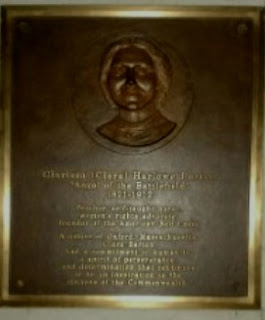Memorial park pays tribute to victims of 'The Great Hunger'

Beginning in 1845, a fungus spread across Ireland devastating numerous potato crops. The Irish referred to the famine as “An Gorta Mor” or “The Great Hunger.” Despite the significant losses of potatoes the British government (which ruled Ireland at the time) exported tons of grain from Ireland in order to pay absentee landlords their rents. While the British government was sending food elsewhere, poor Irish families suffered from starvation. One million people died of starvation and/or disease during the five years of the famine. About 500,000 Irish citizens were evicted from their homes for not paying their rent. As a result of the horrific living conditions between one million to 2 million Irish people immigrated to other parts of the world. Many immigrants landed in North America. Several of the immigrants died at sea because of the lackluster conditions on the ships that crossed the Atlantic Ocean. Many of these immigrants settled in Boston, Massachusetts. During the five years of the famine, over 100,000 Irish refugees came to Boston. When the refugees arrived they initially faced discrimination. Signs posted on businesses said: “No Irish need apply.” The immigrants however, adopted an ethic of hard work, ambitious goals, and established themselves in several professions including law, medicine, and politics. As of 1998, approximately 44 million Americans claimed Irish ancestry.
A number of Irish writers described the effects of the Famine:
“Mouths tightened in, eyes died hard, faces chilled to a plucked bird. In a million wicker huts beaks of famine snipped at guts.” – Excerpted from Seamus Heaney’s poem At a Potato Digging.
“The stranger reaps our harvest, the alien owns our soil.” - Lady Jane Wilde, Irish poet.
“The features of the people were gaunt, their eyes wild and hollow, and their gate feeble and tottering. Pass through the fields, and you were met by little groups bearing home on their shoulders a coffin.”
- Irish novelist William Carleton.
In the city of Boston, there is a monument dedicated to the millions of Irish affected by the famine in the mid 19th century. The idea for the Boston Irish Famine Memorial was initially developed by former Boston Mayor Raymond L. Flynn in 1991. However, the project did not begin to really come into fruition until 1996 when Thomas J. Flatley, a real estate developer, met with Boston Mayor Thomas M. Menino to discuss creating a memorial.
On June 28, 1998, the Irish Potato Famine Memorial was dedicated in Boston as part of the 150th anniversary of “The Great Hunger.” The Memorial is located near Downtown Crossing at the corner Washington and School Streets. The 6,000 sq. ft Famine Memorial Park, which cost $1 million dollars, includes two separate life size bronze sculptures. One sculpture depicts a poor family leaving Ireland. This sculpture elicits the despair of those affected by the starvation. In contrast to this sculpture, the second sculpture shows an Irish family arriving in Boston. This family is shown with confidence and hope for a brighter future. The Memorial also includes eight plaques that contain information about different aspects of the famine and Irish history and culture.
The Memorial stands as a testament to the struggle of a people who sacrificed and persevered through an incredible set of circumstances. The Memorial reminds us that famines can still occur and that they are not a relic of the past. The hardships of An Gorta Mor serve as a lesson to speak out against negative conditions that can occur in any society. The primary causes of the Irish Potato Famine: absentee landlordism, colonialism, poor crop production, and insufficient social & political leadership can still happen in the 21st century.


Comments
Post a Comment